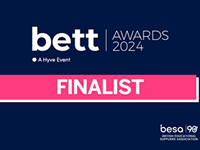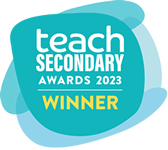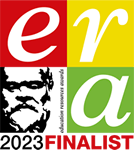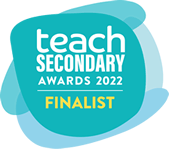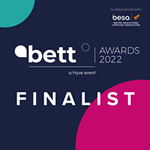Differentiation
Differentiation is the process by which differences between learners are accommodated so that all students have the best possible chance of learning. Over time a misconception has grown in teaching that the only useful differentiation is by making different groups of students work to different objectives or have different tasks. The assumption is often compounded by the fact that observers are often unskilled in spotting the subtler, yet more effective forms of differentiation. They assume that if students don’t have different task sheets, or there aren’t differentiated objectives on the board, then there is no differentiation. In fact, we’d go so far as to say that differentiation by task can sometimes be the worst form of differentiation because why shouldn’t all learners have an equal opportunity to succeed in all tasks? Teachers need to be mindful that they don't allow a self-fulfilling prophecy to perpetuate.
Our message is simple. We should be adopting a high performance learning strategy where the goal is to scaffold up, not differentiate down.
Ultimately all the students of Computer Science have the same exam to sit, therefore they should be treated equally. That is not to suggest that some students don’t need, or deserve more support, or that others cannot be stretched and challenged. Rather, that the differentiation should be aiming to bring everyone up to the same level, not inadvertently holding some students down.
Differentiation can take many forms:
Differentiation by dialogue and support
As students are working on classroom activities, there is an opportunity to move around the classroom and question them about what they have learned. To challenge inaccuracies and misconceptions, and to ask some higher order questions of the more able students. Ask lots of “why” rather than “what” questions. However, don’t lose sight of the fact that with theory, the students need to know a defined set of knowledge. The goal here is to ensure every student is brought up to the same baseline and understand what they are being taught.
Differentiation by grouping
Most of the CraignDave activities are intended to be completed individually. That is partly because group work is not always effective and also because students need their own work to revise from later. However, it is often helpful to move students who are really struggling next to students who are doing really well. It is one skill to know the subject, it is quite another to be able to explain it to someone who doesn’t. Paired programming is an opportunity to pair up two really able programmers and watch them spark off each other, and any other combination. Using yourself in a pair too.
Differentiation by task
We don’t think giving students different theory activities because of their targets or current attainment is a good idea. The goal should be to bring all the students up to the same level through differentiation by dialogue and support instead. We aim to ensure all students have a solid foundation of knowledge and understanding. The challenge should be for students to retain this knowledge and use key words confidently. It should not need to be differentiated by task. However, with programming this is a very useful type of differentiation as students can work through a series of increasingly difficult problems independently, moving on at their own pace. This is preferable to dictating the pace with programming. There is not much to be gained by leading iterations from the front of the class for example when some students don’t understand conditions and others are already confident. Craig and Dave don’t differentiate theory work by task, we differentiate programming by task instead. We expect, and are confident with only half of the time in our lessons being differentiated by task. At A’level I frequently give students an opportunity either to work on their student learning record, or to use the lesson time for programming. I don’t really mind when they do each aspect of the work that they need to hand in, as long as it all gets done by the deadline.
Differentiation by pace
By adopting a flexible approach with programming you are also demonstrating differentiation by pace. As programming is a feature of many lessons throughout the course and not taught as a separate entity, when students have completed their theory work, they can continue with programming challenges without being held back.
Differentiation by resources
Not to be confused with differentiation by task, differentiation by resource is about providing different supporting materials to enable all students to complete the same task. We often do this with different sources of information. Using our videos as a source, online syntax guides, text books and getting groups looking at different scenarios. This will vary greatly from task to task, but encouraging students to be selective about which sources are most helpful to them can be useful.
Differentiation by outcome
Often confused with “it’s what the students produce”, instead this is about setting them goals within a lesson. “I’d like you to add another reason why…”, “you should be able to explain…” This is easily achieved whilst differentiating by dialogue and support.
Differentiation by assessment
There is little point giving different students different tests and exams given that ultimately they will all sit the same paper. However, this is more about assessment to inform planning. Using formative assessment approaches you can pick up on common misconceptions and concepts that a larger number of students are struggling to understand. You can then tailor the time, questioning, explanation and dialogue to address these needs. It has been suggested in the past with the assessment for learning strategy that you should start by ascertaining the starting point for students at the beginning of a lesson and then dynamically adapt your lesson to address that starting point. This is almost impossible to do successfully and unlikely to meet the needs of all learners. Instead it would be better to know the starting point ahead of the lesson by setting the same homework, enabling students to bring a defined body of knowledge to the lesson, and plan knowing that starting point instead.
In summary, to an unskilled observer, it may appear that CraignDave resources lack differentiation. The truth is they are fully differentiated, but the approach is well matched to the desired outcome. We differentiate in ways that make a difference, and not unnecessarily when there is no need. The differentiation may not be overtly obvious to an observer because there are no different objectives or worksheets, but that doesn’t mean it isn’t there! Don’t expect to find an “all must, most should, some might” approach to our resources. We don’t believe in teaching that way. There is no such thing as a “grade 4 question”. We believe that all learners should have the same high aspirations, but differentiation is the mechanism used to ensure they have an equal opportunity of achieving it.
- Home
- /
- Differentiation
Registered in England and Wales: 10442992
VAT Number: 290 9845 58
Telephone: 01452 947500
Email: admin@craigndave.co.uk
